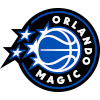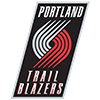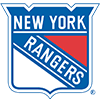I hinted at this issue in recent installments of this column, but I'm excited for the return of the stolen base to the major-league game. I am not fully supportive of all the new rule changes coming to the game next year, but larger bases and limited throwovers are both actions which should spur more activity on the basepaths and discourage teams from standing around and waiting for the three-run homer.
Five different teams finished with at least five players with 10 or more stolen bases:
- Texas: Adolis Garcia, Marcus Semien, Leody Taveras, Bubba Thompson, Eli White
- Philadelphia: Bryce Harper, J.T. Realmuto, Kyle Schwarber, Jean Segura, Bryson Stott
- Cleveland: Andres Gimenez, Steven Kwan, Jose Ramirez, Amed Rosario, Myles Straw
- Los Angeles: Cody Bellinger, Mookie Betts, Freddie Freeman, Chris Taylor, Trea Turner
Meanwhile, the Twins, Tigers, and Reds do not have a single player on their roster who recorded a double-digit stolen base total this season. In both 2011 and 2012, over 110 players had at least 10 steals over the course of those full seasons, but the league has not even had as many as 90 players steal 10 or more bases in a season since then, with 84 reaching that mark this year. That dry spell is about to end, and I contend the current divisional-era record of 118 set in the 1987 season is in danger of being eclipsed in 2023 with
I hinted at this issue in recent installments of this column, but I'm excited for the return of the stolen base to the major-league game. I am not fully supportive of all the new rule changes coming to the game next year, but larger bases and limited throwovers are both actions which should spur more activity on the basepaths and discourage teams from standing around and waiting for the three-run homer.
Five different teams finished with at least five players with 10 or more stolen bases:
- Texas: Adolis Garcia, Marcus Semien, Leody Taveras, Bubba Thompson, Eli White
- Philadelphia: Bryce Harper, J.T. Realmuto, Kyle Schwarber, Jean Segura, Bryson Stott
- Cleveland: Andres Gimenez, Steven Kwan, Jose Ramirez, Amed Rosario, Myles Straw
- Los Angeles: Cody Bellinger, Mookie Betts, Freddie Freeman, Chris Taylor, Trea Turner
Meanwhile, the Twins, Tigers, and Reds do not have a single player on their roster who recorded a double-digit stolen base total this season. In both 2011 and 2012, over 110 players had at least 10 steals over the course of those full seasons, but the league has not even had as many as 90 players steal 10 or more bases in a season since then, with 84 reaching that mark this year. That dry spell is about to end, and I contend the current divisional-era record of 118 set in the 1987 season is in danger of being eclipsed in 2023 with the changes being put into play for the upcoming season. We know this because we have a real-time simulation playing out in the minor leagues this season where the new rule changes are already in effect.
To review, the new rule changes which affect steals are as such:
- Bases increase from 15 to 18 inches square, which shortens the distance between the bases by half a foot.
- Pitchers are only permitted two disengagements from the mound for step-offs or pickoffs. If their next pickoff attempt is unsuccessful, it's ruled a balk and the runners move up a base.
These changes have made an immediate impact at the Triple-A level, where we saw a 61 percent increase in the number of players with 10 or more steals this season, jumping from 84 in 2021 to 135 in 2022. This rate of increase was nearly identical in both the International League and the Pacific Coast League. Not only are we seeing more players attempting steals, we're seeing them convert those attempts at a higher percentage this season as well. It is worth noting, as @reillocity reminded me on Twitter, that Triple-A teams played approximately 20 more games each this season than they did in 2021, while Double-A teams had 17 extra games. If we neutralize things and look at steals per game from JJ Cooper's September piece, we still see the uptick in movement on the basepaths:
LEAGUE | 2021 Games | 2021 Attempts | 2021 SB% | SBA Per/Game | 2022 Games | 2022 Attempts | 2022 SB% | SBA Per/Game | SB% Increase |
IL | 2566 | 2502 | 76% | 1.0 | 2982 | 3575 | 79% | 1.2 | 4% |
PCL | 1284 | 1137 | 75% | 0.9 | 1492 | 1728 | 78% | 1.2 | 3% |
EL | 1196 | 1442 | 72% | 1.2 | 1648 | 1995 | 76% | 1.2 | 6% |
SL | 1384 | 978 | 69% | 0.7 | 1082 | 1712 | 77% | 1.6 | 11% |
TL | 902 | 1475 | 71% | 1.6 | 1370 | 1859 | 78% | 1.4 | 11% |
It seems entirely plausible that major-league clubs are looking at this data and starting to think about how to approach the 2023 season both in terms of on-field strategy as well as off-field strategy. For example, the Rangers have three players in Taveras, Thompson, and White who are of similar skillsets, and it would be tough for the the trio to co-exist on the roster in the current conditions. After all, Thompson and Taveras only saw their playing time increase once White went down with his nasty injury earlier this year. However, the value of the trio increases in a new environment where the stolen base can be better weaponized, meaning the club could retain all three or move one of the three to a slower team looking to add more speed to its lineup.
Starting in early March, Massachusetts residents can now participate in online sports betting using their mobile devices. By signing up for a new account, one of the advantages is the availability of welcome bonuses that can aid in starting your online betting experience.
New players can take advantage of a range of Massachusetts sports betting promos offered by six sportsbooks that could lead to thousands of dollars in welcome offers.
For instance, new players at BetMGM Massachusetts can receive a generous welcome bonus by redeeming the BetMGM Massachusetts bonus code. Previously, sports bettors were given $200 in bonus bets before the launch of online sports betting in Massachusetts. They can claim a first bet offer up to $1,000 since its launch.
Bettors in Massachusetts can use the Caesars Sportsbook Massachusetts promo code and receive a first bet on Caesars that is worth up to $1,500. This is the best deal currently available for sports bettors in the Bay State, as Caesars Massachusetts aims to make its presence known in New England.
As it were, we already know the Marlins are "prioritizing contact hitters who are skilled at getting on base and using the wide gaps of their home park and that speed will be prioritized." The club has had a large majority of its steals come from Jon Berti, who is 39 of 44 this season, while nobody else on the club has more than 12. Jazz Chisholm certainly was doing well until his back injury ended his season after 60 games, but the club has been a below-average station-to-station club when Berti hasn't been involved in the game. Even then, it's tough to steal bases when only one full-time player, Garrett Cooper, has an OBP above .325.
As the Marlins and fantasy players start to hunt for targets this winter, we would be wise to focus on more than just sprint speed. As Jeff Zimmerman taught us in 2020, home to first speed has a stronger correlation to steals and how MLB teams are using the data:
...teams seem to be acting on changes to Time-to-First when deciding if hitters should run more. The value has been around for decades and coaches can use it to help determine who will be running based on that day's pitcher-catcher combos. One front-office executive I talked to stated that their coach still uses the runner's Time-to-First, along with the pitcher time to plate & catcher pop time to determine who should steal bases.
BaseballSavant gives us the current home-to-first times for players in the league with a handy column of sprint speed right next to it so you can see a player's top speed right next to their 90 ft speed. In my best Justin Danger Nunley voice, "Listen, did you know that Akil Baddoo is second only to Shohei Ohtani for the fastest time from home to first in 2022 (min 50 competitive runs)? Now you do." The table below shows the top 80 home-to-first times in the league, how many stolen base opportunities they had (SBO), as well as how often they attempted a steal when the next base was unoccupied (SBA) and how successful they were in doing so (SB%):
PLAYER | TEAM | COMP RUNS | HP TO 1B | SPSPD | SBO | SBA | SB% |
|---|---|---|---|---|---|---|---|
LAA | 193 | 4.09 | 28.3 | 233 | 9% | 55% | |
DET | 73 | 4.11 | 29.0 | 62 | 23% | 64% | |
TB | 91 | 4.12 | 29.2 | 66 | 11% | 86% | |
KC | 198 | 4.13 | 30.4 | 191 | 19% | 81% | |
LAD | 272 | 4.13 | 30.3 | 313 | 10% | 90% | |
ARI | 192 | 4.13 | 29.4 | 143 | 5% | 57% | |
CLE | 178 | 4.13 | 29.2 | 230 | 10% | 86% | |
BOS | 90 | 4.13 | 29.2 | 75 | 11% | 88% | |
CLE | 242 | 4.14 | 29.3 | 236 | 9% | 95% | |
MIN | 82 | 4.16 | 29.1 | 143 | 4% | 100% | |
BAL | 196 | 4.16 | 28.5 | 269 | 16% | 77% | |
CLE | 255 | 4.16 | 28.4 | 298 | 8% | 79% | |
TEX | 52 | 4.17 | 30.3 | 64 | 33% | 86% | |
CLE | 325 | 4.17 | 29.5 | 240 | 9% | 81% | |
NYM | 214 | 4.17 | 27.3 | 265 | 2% | 100% | |
MIA | 70 | 4.18 | 29.2 | 67 | 25% | 71% | |
NYM | 273 | 4.18 | 28.7 | 300 | 2% | 60% | |
CWS | 131 | 4.18 | 28.4 | 117 | 2% | 100% | |
MIN | 97 | 4.18 | 28.2 | 173 | 3% | 50% | |
BAL | 54 | 4.19 | 29.1 | 55 | 4% | 50% | |
LAD | 196 | 4.19 | 28.8 | 181 | 5% | 78% | |
TB | 95 | 4.20 | 30.4 | 99 | 16% | 88% | |
BAL | 156 | 4.20 | 30.1 | 132 | 33% | 79% | |
PIT | 116 | 4.20 | 30.0 | 99 | 14% | 71% | |
BAL | 64 | 4.20 | 29.4 | 93 | 2% | 100% | |
CWS | 80 | 4.20 | 29.1 | 86 | 19% | 75% | |
COL | 60 | 4.20 | 28.7 | 83 | 7% | 83% | |
ATL | 88 | 4.20 | 27.5 | 89 | 9% | 38% | |
ARI | 135 | 4.21 | 30.0 | 127 | 20% | 88% | |
TEX | 102 | 4.21 | 29.5 | 134 | 11% | 67% | |
ATL | 202 | 4.21 | 29.4 | 148 | 15% | 91% | |
WSH | 125 | 4.21 | 29.0 | 111 | 9% | 60% | |
TB | 55 | 4.21 | 28.8 | 47 | 6% | 100% | |
KC | 149 | 4.21 | 27.8 | 211 | 2% | 40% | |
PHI | 170 | 4.22 | 29.0 | 170 | 9% | 75% | |
LAA | 102 | 4.23 | 29.2 | 110 | 16% | 94% | |
TB | 141 | 4.23 | 28.7 | 169 | 8% | 77% | |
CLE | 211 | 4.23 | 28.5 | 199 | 14% | 74% | |
SEA | 192 | 4.24 | 29.7 | 190 | 17% | 78% | |
COL | 204 | 4.24 | 28.4 | 217 | 2% | 40% | |
LAD | 123 | 4.24 | 28.1 | 149 | 11% | 82% | |
HOU | 205 | 4.24 | 27.9 | 252 | 8% | 95% | |
KC | 208 | 4.24 | 27.7 | 206 | 8% | 81% | |
COL | 78 | 4.25 | 29.5 | 90 | 16% | 86% | |
STL | 243 | 4.25 | 28.8 | 241 | 14% | 91% | |
MIL | 104 | 4.25 | 28.5 | 131 | 10% | 92% | |
SF | 119 | 4.25 | 28.2 | 119 | 10% | 83% | |
NYY | 108 | 4.26 | 29.2 | 101 | 19% | 84% | |
KC | 136 | 4.26 | 28.8 | 182 | 3% | 67% | |
WSH | 219 | 4.26 | 28.3 | 265 | 5% | 69% | |
CIN | 73 | 4.26 | 27.9 | 82 | 6% | 80% | |
MIA | 155 | 4.27 | 29.5 | 151 | 29% | 89% | |
PHI | 137 | 4.27 | 29.0 | 130 | 11% | 71% | |
PIT | 62 | 4.27 | 28.8 | 50 | 6% | 67% | |
HOU | 116 | 4.27 | 28.7 | 142 | 5% | 57% | |
TB | 242 | 4.27 | 28.7 | 224 | 15% | 73% | |
BOS | 73 | 4.27 | 28.6 | 82 | 18% | 80% | |
ATL | 168 | 4.27 | 28.5 | 204 | 16% | 72% | |
NYY | 240 | 4.27 | 28.4 | 208 | 11% | 84% | |
TOR | 185 | 4.27 | 28.2 | 144 | 8% | 89% | |
NYY | 111 | 4.27 | 27.9 | 190 | 5% | 77% | |
ATL | 78 | 4.27 | 27.6 | 91 | 8% | 100% | |
WSH | 150 | 4.27 | 27.0 | 133 | 5% | 43% | |
STL | 108 | 4.28 | 29.8 | 129 | 14% | 78% | |
HOU | 189 | 4.28 | 29.4 | 194 | 7% | 85% | |
HOU | 87 | 4.28 | 28.3 | 77 | 6% | 40% | |
STL | 116 | 4.28 | 28.2 | 133 | 4% | 80% | |
CIN | 71 | 4.28 | 28.1 | 103 | 8% | 88% | |
ARI | 179 | 4.28 | 28.0 | 210 | 10% | 71% | |
NYM | 216 | 4.28 | 28.0 | 195 | 14% | 67% | |
PHI | 74 | 4.28 | 26.9 | 62 | 10% | 100% | |
LAA | 100 | 4.29 | 29.4 | 182 | 1% | 100% | |
CHC | 216 | 4.29 | 29.1 | 202 | 10% | 90% | |
DET | 137 | 4.29 | 28.4 | 202 | 10% | 90% | |
NYM | 135 | 4.29 | 28.0 | 202 | 10% | 90% | |
DET | 157 | 4.29 | 27.7 | 174 | 3% | 20% | |
TB | 125 | 4.29 | 27.7 | 138 | 6% | 100% | |
MIA | 167 | 4.29 | 27.3 | 157 | 10% | 80% | |
CLE | 178 | 4.30 | 29.0 | 203 | 1% | 100% | |
CHC | 52 | 4.3 | 028.3 | 65 | 6% | 100% |
The league average for attempting steals is five percent, while the success rate is 75 percent. The following players all attempted steals three times more frequently than the league average while converting those steals at a league-average rate or better and could potentially see their boats rise a little higher in the new tides coming to the game:
PLAYER | Team | SBO | SBA | SB% |
|---|---|---|---|---|
TEX | 64 | 33% | 86% | |
BAL | 132 | 33% | 79% | |
MIA | 151 | 29% | 89% | |
ARI | 127 | 20% | 88% | |
SEA | 64 | 20% | 92% | |
KC | 191 | 19% | 81% | |
NYY | 101 | 19% | 84% | |
CWS | 86 | 19% | 75% | |
SEA | 190 | 17% | 78% | |
LAA | 110 | 16% | 94% | |
BAL | 269 | 16% | 77% | |
TB | 99 | 16% | 88% | |
COL | 90 | 16% | 86% | |
ATL | 148 | 15% | 91% |
Witt and Rodriguez are surefire first-round selections next season, and their talents could thrive in the new running environment. Harris has certainly improved his stock for 2023, while upstarts such as Haggerty and McCarthy gain some value here as well. Mateo and Berti have certainly shown their disruptive values on the bases, a skill which may keep other light-hitting utility players on this list relevant for another season.
Conversely, these are the players who were on the move at least twice as frequently as the league average but were not as successful in stealing bases and could either have their opportunities reduced in the future or be helped under the new rules:
PLAYER | Team | SBA | SB% |
|---|---|---|---|
DET | 23% | 64% | |
NYM | 14% | 67% | |
CHC | 13% | 59% | |
TEX | 11% | 67% | |
SD | 11% | 45% |
Baddoo has struggled to reach base all season at the majors, but when he has been on first, A.J. Hinch has let him run, something that could change next year. Marte was coming off an amazing year of running, so we expected some regression, and injuries certainly were an additional factor. Morel and Taveras, like Baddoo, had the luxury of playing for second-division clubs, but a more competitive Texas team could curb Taveras's opportunities next year while a healthier roster in San Diego could put Azocar back to the bench.
One name missing from both charts is Ohtani. He has the fastest home to first time in the league, yet Joe Maddon and Phil Nevin have only put him in motion nine percent of the time and he was successful in just 55% of his attempts this season. I know he is a unicorn, but that speed and that success rate are tough to put together. That could quickly change under the new rules, or he could go the Mike Trout route and just stop stealing bases. We were reminded of managerial impact in Philadelphia this season, AS the Joe Girardi-led Phillies attempted 36 steals in the 2+ months he ran the club while mostly the same roster has attempted 97 steals since Rob Thompson took over on June 3rd.
The other side of the steals equation is the pitching battery, and we should be most interested in the pitcher part of that equation moving forward, as that's where we'll see an immediate impact under the new rules. Some pitchers are notoriously terrible at curbing the running game with their slow time to home plate, with Noah Syndergaard front and center. The league was 25 of 26 off him in his time in Los Angeles where neither battery mate helped matters, but since going to Philadelphia, the league is just 5 of 7 since the catching situation upgrade. The league ran on him 23% of the time with the Angels but just 9% since he joined the Phillies. I point this out because where he lands could drastically impact whether he is draftable or not under these new rules if he doesn't make some sort of adjustment to his approach to the running game. Below is the leaderboard for pitchers who have permitted the most steals in 2022:
Name | Team | SBO | SB | CS | SB% | SBA |
|---|---|---|---|---|---|---|
TOT | 195 | 30 | 3 | 91% | 17% | |
MIA | 270 | 24 | 4 | 86% | 10% | |
NYM | 79 | 19 | 3 | 86% | 28% | |
BOS | 284 | 19 | 6 | 76% | 9% | |
TOR | 260 | 18 | 4 | 82% | 8% | |
SFG | 236 | 18 | 2 | 90% | 8% | |
WSN | 204 | 17 | 2 | 89% | 9% | |
PIT | 284 | 17 | 3 | 85% | 7% | |
SEA | 246 | 17 | 9 | 65% | 11% | |
CIN | 185 | 16 | 0 | 100% | 9% | |
TEX | 222 | 16 | 2 | 89% | 8% | |
CLE | 257 | 16 | 4 | 80% | 8% | |
ARI | 256 | 15 | 5 | 75% | 8% | |
SFG | 224 | 15 | 2 | 88% | 8% | |
COL | 278 | 15 | 6 | 71% | 8% | |
TEX | 176 | 15 | 2 | 88% | 10% | |
CHW | 149 | 15 | 4 | 79% | 13% | |
WSN | 279 | 14 | 5 | 74% | 7% | |
SDP | 235 | 14 | 2 | 88% | 7% | |
ARI | 256 | 14 | 3 | 82% | 7% | |
CIN | 116 | 14 | 0 | 100% | 12% | |
SFG | 282 | 14 | 5 | 74% | 7% | |
OAK | 135 | 13 | 2 | 87% | 11% | |
SDP | 169 | 13 | 1 | 93% | 8% | |
LAA | 190 | 13 | 4 | 76% | 9% |
Baseball Savant has a leaderboard which shows us a pitcher's tempo and the percentage of time that pitcher works fast or slow with runners on base. We can see that Syndergaard's preferred method of deterring the running game is mostly varying his tempo home, as it slows down with runners on base, but it wasn't until J.T. Realmuto was inserted into the equation did the formula work. Alcantara takes a similar approach, as he slows way down with runners on base compared to when he is pitching with the bases empty, and the league has certainly exploited their opportunities against him because they recognize that his pitching talents afford them few opportunities to put together a rally. Pivetta, Gausman, and Rodon are other pitchers who may have issues moving forward if they do not develop better pickoff moves or make adjustments to their approach.
The interesting part in this whole situation will be how it impacts the late innings of a game when relievers come into play. Kenley Jansen, Giovanny Gallegos and Devin Williams are notable names at the top of the Slow% leaderboard as each of them work at a slow pace over half the time with runners on base. None of those names show up on the previous leaderboard, but teams could certainly utilize their opportunities later in games with the pitch clock rules in effect to disrupt these relievers, whose primary weapon of choice in deterring the running game is varying their time to home. Throw in Adam Ottavino, whose slow delivery and slider-heavy approach encourages the league to run on him 28 percent of the time when the next base is unoccupied, and something has to change for the pending free agent as he offers his services to new clubs. If teams already run on Ottavino at will, what happens in the new world order where he has but two chances to throw over and keep the runner honest? Even under the current rules, he had more successful steals against him this year than all but two pitchers!
A final area to watch will be balks and their impact on the running game and antics this season. Pitchers rarely balk at the major-league level, but minor-league pitchers in Double-A and Triple-A certainly saw the per-game rates of balks jump this season as they adjusted to the new rules, with a particularly dramatic increase at the Double-A level:
LEAGUE | 2021 BK/G | 2022 BK/G | INCREASE |
|---|---|---|---|
INTL | 0.055 | 0.069 | 24% |
PCL | 0.050 | 0.062 | 25% |
TX | 0.066 | 0.131 | 98% |
ET | 0.039 | 0.067 | 73% |
SL | 0.041 | 0.084 | 105% |
Rising tides lift all boats, but the impact of these rule changes will be felt differently by some of the hitters and pitchers on the extreme ends of the seas. It will be exciting to see steals return to the game, and it will be something to watch as soon as games begin in Spring Training as clubs begin to work out these tendencies and strategies.







































